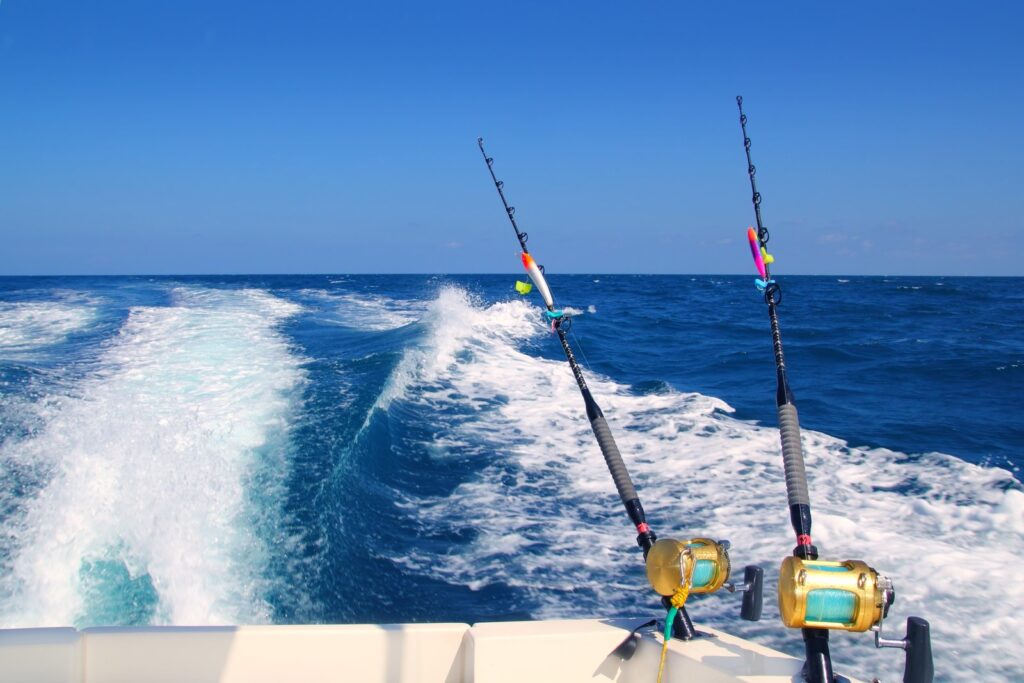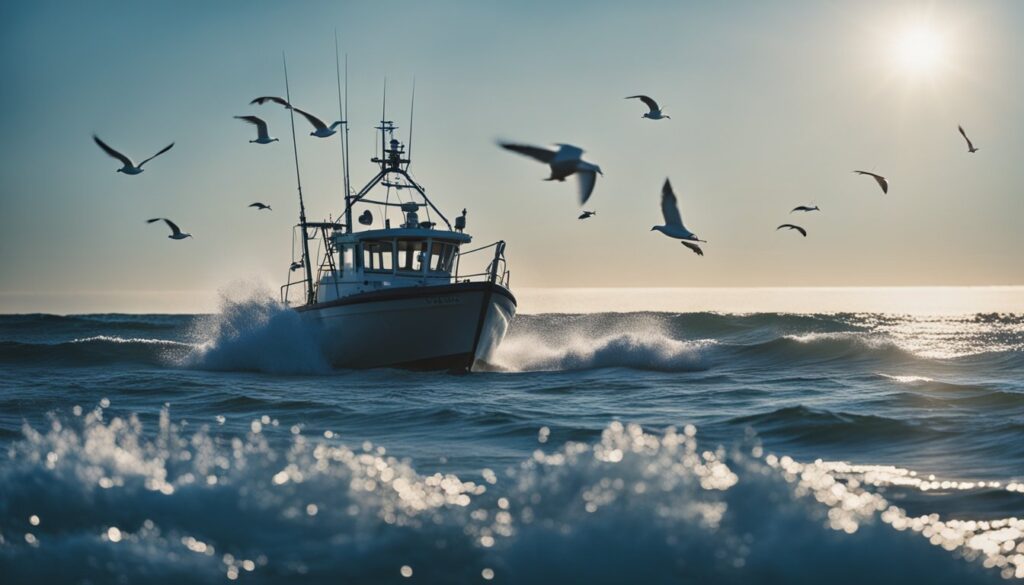(updated for May 2025)
Expensive fishing gear can help make things easier, it often lasts longer and can be more reliable, so let’s talk about two most expensive fishing reels in the world.
Yes, premium prices can be intimidating, but there’s often a sustainability angle to consider with high-end equipment that goes beyond mere luxury.
Some reels from less popular or custom brands may cost more, but these are the two of the most expensive ones that you can find online.
What Are The Most Expensive Fishing Reels?
There are few fishing reels that break through the $300-$500 price point, which is still significant for many types of reels, but far from unheard of.
When the price of a reel reaches up to or over $1,000, well, that’s noteworthy.
The Shimano Stella SW Spinning Reel retails between $1,000 and $1,250 depending on the size and retailer.
This is a top-of-the-line spinning reel designed for saltwater surf fishing, built to handle the toughest conditions.
Unlike most spinning reels that have bodies made of plastic or polymer, the Shimano Stella SW features an all-metal body, and is one of the most expensive Shimano fishing reels.
It also has an innovative drag system that keeps heat away from the spool, a waterproof body, and sealed stainless steel bearings.
Another fishing reel that sells for even more than the Stella SW is the Daiwa Marine Power MP 3000 12V with an MSRP of $3,499.99 which makes it one of the most expensive Daiwa fishing reels. Check out all its amazing specs on the Daiwa website.
This is an electric conventional reel used for deep-drop fishing in the open ocean.
Commercial fishermen use deep-dropping to catch fish such as swordfish, tilefish and snowy grouper.

It involves dropping baits over 1000 feet deep, so the electric reel makes reeling up the catch easier and less time-consuming.
This reel also has important features such as a machine-cut aluminum frame, stainless steel internal parts, winding speed control, and a waterproof digital line readout.
What Companies Make the Most Expensive Spinning Reels?
As explained by the two highest price tag reels on the market above, Shimano and Daiwa make the most expensive fishing reels available these days.
These titans of the fishing industry make high-quality products that are the pinnacle of fishing reel technology.
Both Daiwa and Shimano originate from Japan, which is a country well known for its attention to detail and efficiency in manufacturing.
Daiwa and Shimano are true innovators of the fishing industry that other companies try to emulate. With this reputation, it’s easy to see why their products demand a premium.
Why are High End Fishing Reels So Expensive?
You may wonder if other reels can do the same thing as the Shimano Stella SW and Daiwa Marine Power MP 3000, then why are they so expensive?
The answer is these reels are made from durable, high-quality materials that are also corrosion resistant.
Materials like stainless steel and aluminum have a higher raw cost compared to cheaper materials such as regular steel and plastic, and these extra costs account for the price of the reels you buy.
Another reason why these reels are so expensive is that they are the result of cutting-edge engineering that seen in industries such as aerospace.
The extra research, development, and more precise manufacturing needs are also a high contributor to these premium reels.
Lastly, because these reels are used for such specific styles of fishing, they will only be useful for a small group of people.

The Environmental Case for Premium Fishing Gear
While the price tags of high-end reels might cause “sticker shock”, there’s a sustainability angle worth considering. Premium fishing gear like the Shimano Stella SW and Daiwa Marine Power MP 3000 are built to last decades with proper maintenance, unlike cheaper alternatives that might end up in landfills after a few seasons.
High-quality reels generally offer:
- Longer product lifespan: Reducing waste and the environmental impact of manufacturing replacement reels
- More durable materials: Less susceptible to breaking and requiring replacement
- Serviceable components: Many premium reels can be repaired rather than replaced
- Better efficiency: Higher-quality drag systems and gearing can reduce fish fighting time, potentially improving catch-and-release survival rates
Environmental consciousness in fishing doesn’t always mean buying the least expensive gear. Sometimes investing in quality equipment that won’t need frequent replacement is the more sustainable choice in the long run.
Ethical Considerations of Luxury Fishing Equipment
When discussing high-end fishing equipment, it’s worth considering some ethical dimensions:
- Responsible manufacturing: Both Shimano and Daiwa have implemented sustainability initiatives in their manufacturing processes
- Catch method impact: The Daiwa Marine Power, designed for deep-dropping, targets specific deep-water species. Anglers using such specialized equipment should research the conservation status of target species and follow catch limits carefully
- Resource allocation: Premium fishing equipment represents a significant allocation of materials and energy in production. The environmental footprint is justified when the equipment provides years or decades of service
For the environmentally conscious angler considering premium equipment, these factors should be weighed alongside performance considerations.
Are They Worth the Money?
If the Shimano Stella SW or Daiwa Marine Power MP 3000 are worth the money is a matter of opinion, so it depends on who you ask.
These reels have a niche market, and only a few anglers will consider buying them, but those individuals need the best equipment for their needs.
If you’re a keen surf angler, and you need a spinning reel that will work as hard as you do, it may be worth the money to buy the Shimano Stella SW.
If you are always replacing less expensive reels because of corrosion and wear, paying more for the Shimano Stella SW may save you money in the long run.
As for the Daiwa Marine Power MP 3000, if you’re a commercial fisherman that deep drops day after day to make a living, it may be well worth the money.
If you’re a recreational deep drop angler, there may be less expensive reels out there that will do the job.
Sustainable Use and Maintenance of Premium Reels
If you do invest in a high-end reel like the Shimano Stella SW or Daiwa Marine Power MP 3000, maximizing its lifespan through proper maintenance is not just economically sensible but environmentally responsible:
- Regular cleaning: Saltwater anglers especially should rinse their reels with fresh water after each use
- Proper lubrication: Follow manufacturer guidelines for lubrication schedules
- Professional servicing: Consider having your premium reel professionally serviced every few seasons
- Careful storage: Keep reels out of extreme temperatures and humidity when not in use
- Responsible handling: Avoid drops or impacts that could damage internal components
With proper care, a premium reel could serve you for decades—potentially making it a more sustainable choice than repeatedly purchasing lower-quality equipment.
Environmental and Sustainability Efforts
Both Shimano and Daiwa have made significant advances in their manufacturing and design to help the environment. Here’s a brief rundown of each:
Shimano
Shimano has taken clear steps towards sustainable manufacturing, with 99% of electricity used in its Japanese production facilities now coming from renewable sources.
It operates a low-emission, high-efficiency production system, significantly reducing CO₂ output through advanced technologies like vacuum carburising furnaces. Shimano also promotes the Shimano Green Plan (SGP), which sets environmental standards for chemical use and supplier compliance.
Additionally, the company actively reduces plastic packaging, reuses materials in distribution, and maintains comprehensive environmental management systems.
Daiwa
Daiwa has introduced several environmental initiatives across its operations. These include upgrading to energy-saving systems such as LED lighting and efficient HVAC units, as well as implementing water-saving technologies.
The company also considers environmental credentials in its supply chain and works to engage tenants and partners with sustainability guidelines.
Though less publicised than Shimano’s programme, Daiwa’s approach still reflects a commitment to lowering environmental impact and supporting broader sustainability goals.
Alternatives to Buying New Premium Equipment
For those of us concerned about both performance and environmental impact, there are alternatives to purchasing brand-new premium gear:
- Certified pre-owned: Some specialty shops offer refurbished high-end reels
- Buy once, cry once: Invest in quality gear that will last rather than repeatedly replacing cheaper alternatives
- Repair rather than replace: When components wear out, seek repair options before considering replacement
- Research brand ethics: Some fishing gear manufacturers have stronger environmental commitments than others
These approaches can help balance performance needs with environmental concerns.
To Wrap Things Up
Most of us to need to think about our gear budget, but it’s fun to look at some of the most expensive reels for their fantastic quality and innovations.
The reasons for buying expensive gear are many. Some anglers want the best quality gear, some want it as a status symbol, and others think you must spend lots of money to get a long-lasting product.
From a sustainability perspective, there’s something to be said for investing in equipment that won’t need frequent replacement. The environmental footprint of manufacturing a single high-quality reel that lasts 20 years is likely smaller than producing multiple lower-quality reels over the same period.
Whatever the goal is, both the Shimano Stella SW and Daiwa Marine Power MP 3000 will achieve it.
As conservation-minded fishermen, we should consider the total environmental impact of our gear choices—including durability, repairability, and the manufacturing practices of the companies we support. Sometimes, the most expensive option might also be the most sustainable in the long run.
What do you think – Are these reels worth the money, or do you think there’s no good reason they should be as expensive as they are? Does high cost always equal high quality? And does investing in premium gear align with sustainable fishing principles?
